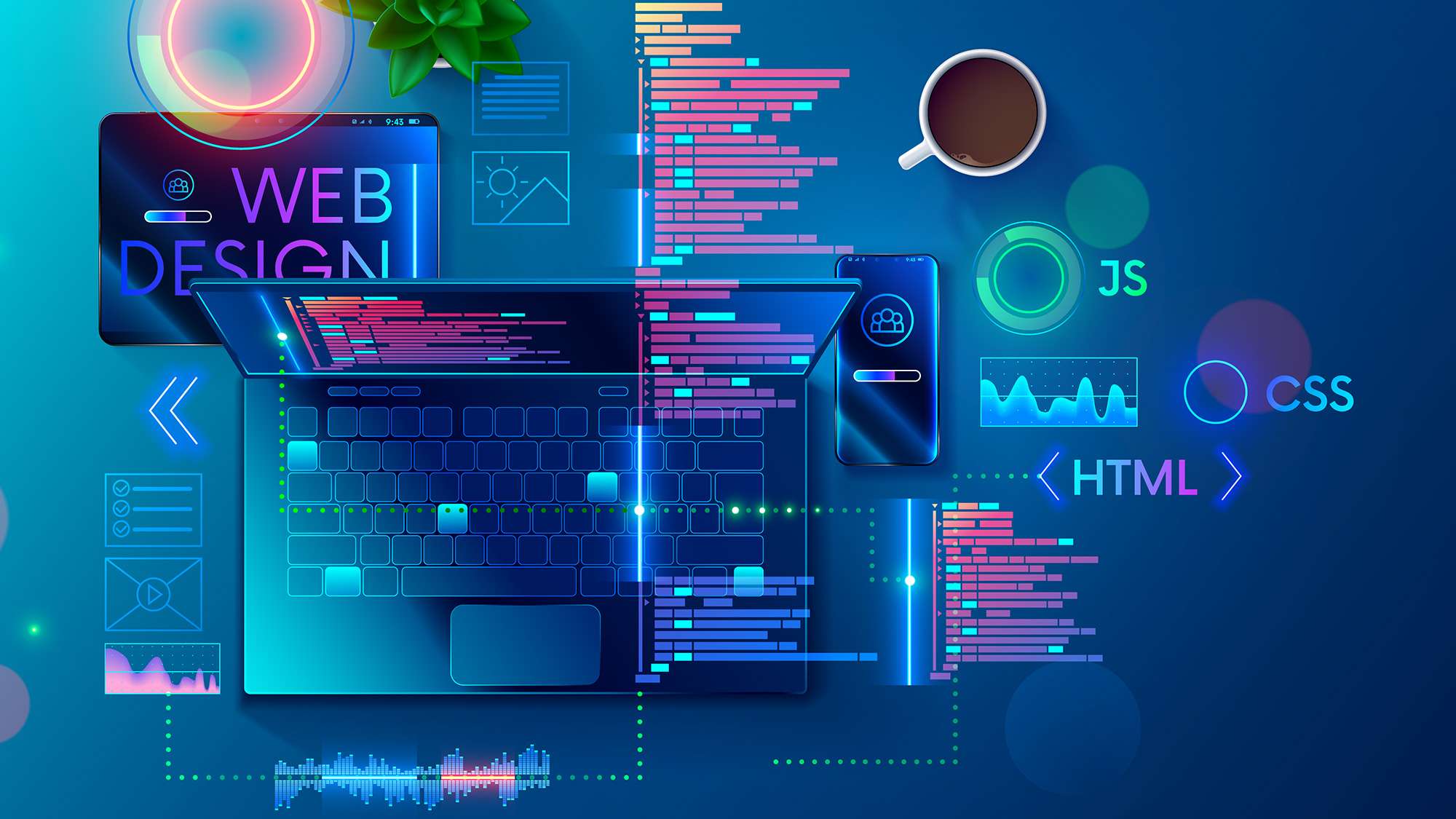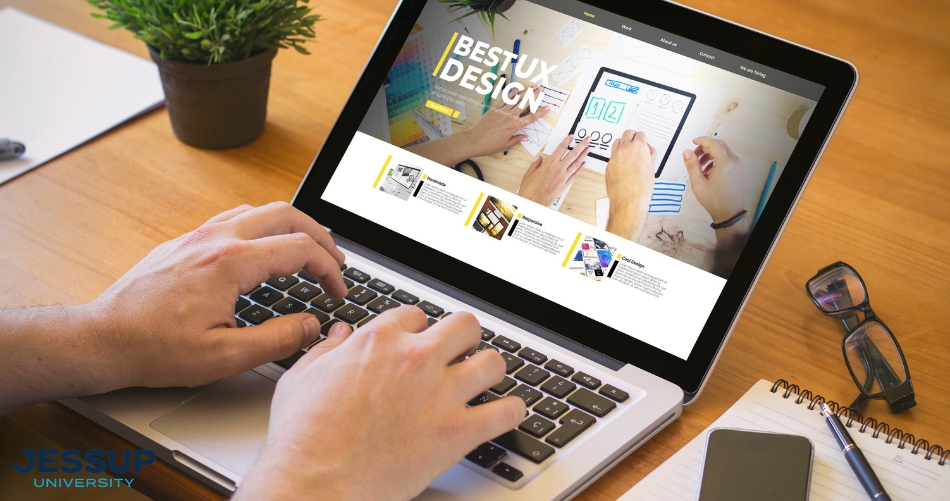Boost User Experience with Cutting-Edge Website Design Approaches
Boost User Experience with Cutting-Edge Website Design Approaches
Blog Article
Maximize Individual Experience With Cutting-edge Website Style Solutions
In today's electronic landscape, maximizing customer experience with innovative website layout remedies is imperative for businesses seeking to involve their audience successfully. The integration of interactive elements can additionally boost the user journey, motivating a reevaluation of typical layout approaches.
Recognizing User-Centric Style

To apply user-centric layout properly, it is necessary to conduct thorough research, consisting of customer interviews, studies, and functionality testing. These research methods offer beneficial information that notifies design decisions, guaranteeing that the final product aligns with user assumptions. Furthermore, creating user personas can help developers empathize and imagine with the end-users, leading the style process toward extra appropriate remedies.
Additionally, repetitive design is a vital component of user-centric methods. By continually testing and refining layouts based upon individual comments, developers can recognize pain points and locations of improvement, resulting in a much more sleek end product. Eventually, user-centric layout is not simply a stage in the growth process but a continuous dedication to focusing on customer demands, causing even more efficient and engaging digital experiences.
Relevance of Responsive Layouts
As electronic communications progressively occur throughout a range of gadgets, the relevance of responsive designs can not be overstated. A receptive design makes sure that a web site adjusts perfectly to different screen dimensions, from desktop computer monitors to smartphones. This versatility is important in today's multi-device landscape, where users expect a consistent and appealing experience no matter exactly how they access web content.
The primary advantage of responsive style is improved individual contentment. When a website is optimized for all gadgets, it reduces the need for zooming, scrolling, or straight navigation, which can irritate individuals and lead to greater bounce prices. Furthermore, online search engine like Google prioritize mobile-friendly websites in their ranking formulas, making receptive designs necessary for reliable search engine optimization methods.
Instead of managing different variations of a site for various tools, a single, fluid layout can be modified, conserving time and resources. Eventually, investing in responsive designs is not simply a pattern; it is a fundamental principle of contemporary web design that substantially improves customer experience and engagement.
Enhancing Navigation and Access
Effective navigation and access are critical elements of a properly designed site, dramatically influencing customer involvement and contentment. A straightforward navigating framework permits site visitors to locate information promptly and with ease, decreasing stress and increasing the possibility of repeat check outs. Implementing clear, descriptive tags for navigating web links, in addition to a logical power structure, can lead individuals perfectly via the website.
Access is just as essential, ensuring that all users, no matter their disabilities or capacities, can communicate with the site successfully. This can be attained with using suitable shade contrasts, message sizes, and alt message for images, which with each other boost the experience for aesthetically damaged users. Integrating key-board navigation and display reader compatibility expands accessibility for customers with diverse requirements.
Routine use screening can offer beneficial insights into navigating efficiency and availability issues. By gathering feedback from actual users, designers can identify pain points and make enlightened modifications. Inevitably, prioritizing navigation and availability not only cultivates inclusivity however also cultivates a favorable user experience, enhancing the brand name's commitment to quality and customer treatment in an increasingly electronic landscape.
Using Aesthetic Pecking Order Effectively
Aesthetic pecking order works as an assisting framework in web site design, guiding users' focus to the most crucial aspects on a web page. By strategically arranging aesthetic components such as typography, spacing, and shade, developers can develop a clear pathway for customers to follow. This site framework not only boosts user experience but additionally enhances content understanding.
One efficient method to develop visual pecking order is with making use of size and range. Bigger aspects naturally attract even more focus, making headings and crucial visuals prominent. Matching this technique with contrasting colors can better differentiate primary material from additional details, guaranteeing that crucial information sticks out.
In addition, the arrangement of aspects plays a critical role in guiding user interaction. Employing a grid format can produce a natural circulation, while whitespace helps to separate content and minimize cognitive load - Website Design. This deliberate spacing allows customers to refine details a lot more easily, causing boosted engagement
Last but not least, making use of regular layout patterns assists strengthen visual power structure, giving customers with familiar signs as they browse the website. By prioritizing these principles, designers can properly maximize individual experience, making sure that site visitors can effortlessly find the details they seek.
Incorporating Interactive Components
The incorporation of interactive aspects into web site layout can considerably boost customer interaction and overall experience. Interactive features such as tests, surveys, and sliders not just astound users however likewise advertise energetic involvement, making the searching experience extra memorable. By encouraging customers to communicate, web sites can properly keep attention and lower bounce prices.
Additionally, integrating dynamic content like animations and float impacts adds an enticing layer of interactivity. These aspects can guide customers without effort through the site, highlighting important information and contacts us to activity. For instance, animated buttons can draw attention and boost click-through rates.
In addition, personalization via interactive devices such as chatbots or referral engines his explanation allows sites to deal with specific preferences, promoting a feeling of link. This customized approach not only improves individual contentment but additionally urges repeat check outs.
Integrating analytics devices to track communications provides beneficial understandings into individual habits, allowing continuous enhancement of the interactive aspects. Eventually, a well-designed interactive experience transforms a passive surfing session right into an appealing trip, bring about boosted customer complete satisfaction and commitment. Consequently, incorporating interactive components is essential for making best use of user experience in modern internet site layout.
Final Thought

In today's digital landscape, taking full advantage of user experience via cutting-edge web site design options is necessary for organizations seeking to involve their target visit here market efficiently. Inevitably, prioritizing navigation and ease of access not just promotes inclusivity yet likewise cultivates a favorable customer experience, enhancing the brand's dedication to quality and customer treatment in a progressively electronic landscape.

In verdict, making the most of customer experience via cutting-edge internet site style options demands a dedication to user-centric principles. Website Design.
Report this page